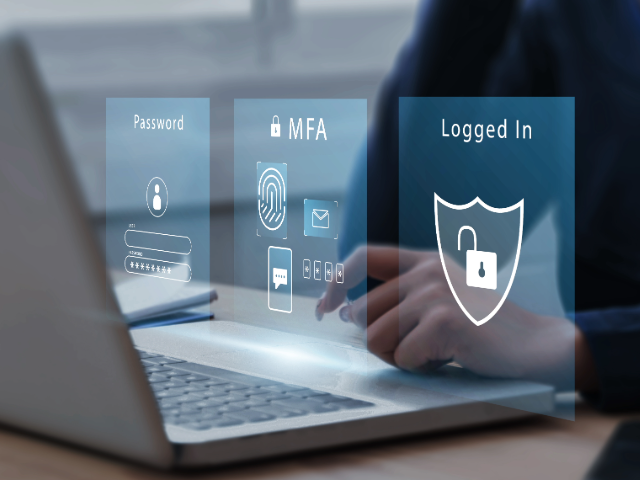As an entrepreneur, you wear many hats. Security should not be ...
Multi-Factor Authentication: Their Crucial Role Against Cybercrime
-
By ALCiT Team

We understand the unique challenges small and medium-sized enterprises (SMEs) face in today's ever-evolving cybersecurity landscape. Cybercrime is on the rise, and smaller organization are increasingly targeted by attackers due to the perception that they have weaker defences compared to larger enterprises.
The Strength of Multi-Factor Authentication
Traditional password-based authentication, while convenient, is inherently vulnerable to exploitation. Weak or stolen passwords are a common entry point for cybercriminals, enabling them to gain unauthorized access to sensitive systems and data. Moreover, the prevalence of password reuse across multiple accounts further exacerbates this risk, as a compromise in one platform can cascade into a full-scale breach.
Multi-factor authentication (MFA) offers a powerful defense against unauthorized access by requiring users to provide multiple forms of verification before granting access to an account or system. By combining something the user knows (e.g., a strong password) with something they have (e.g., a mobile device or security token) and, in some cases, something they are (e.g., biometric data), MFA adds an extra layer of security to the login process, making it significantly more difficult for unauthorized users to access your enterprise, even if they obtain a username and password.
Why is MFA Especially Important for Enterprises?
In 2023, It was reported that 74% of account takeover attacks start with a phishing attack*. MFA throws a wrench into these statistics by making it much harder for attackers to gain access to your systems.
MFAs are
- Cost-Effective: MFA solutions are very affordable, making them a practical security measure for your enterprise.
- Easy to Implement: Many cloud-based business applications already offer built-in MFA functionality but aren't enabled.
- User-Friendly: Modern MFA solutions are designed to be user-friendly, with options like SMS verification or authentication apps.
Beyond the Basics
While MFA makes it significantly harder for attackers to gain access to your systems, it also offers several other benefits:
- Reduced Risk of Phishing Attacks: Phishing emails are a common tactic used by cybercriminals to steal login credentials. MFA makes phishing attacks significantly less effective.
- Compliance with Regulations: Many industries have regulations that require businesses to implement security measures like MFA to protect sensitive data.
- Improved Business Continuity: A cyberattack can bring your business to a standstill. MFA helps to ensure that only authorized users can access your systems, minimizing the risk of a disruptive attack.
The evolution of MFA
Like all technologies, MFA is evolving and therefore, all MFA re not created equal. The previous guidance still holds for now:
- Phone call or SMS (text) based MFA is not recommended.
- Authenticator applications with code or push offer a good compromise between security and usability.
But organizations should start investigating phish resistant authentications (USB/NFC hardware tokens like the YubiKey 5 NFC) since this will soon become the recommended standard.
Taking the First Step Towards a More Secure Future
At ALCiT, we strongly recommend the implementation of MFA as part of your cybersecurity strategy. By doing so, you not only fortify the protection of your organization from cyber threats but also demonstrate a commitment to digital assets security and uphold the trust of your customers. With MFA, you can significantly reduce the likelihood of becoming a victim and ensure your continued success.
Our team of security experts can help you assess your current security posture and develop a plan to implement MFA across your organization. Book your no-obligation conversation with one of our experts at your convenience via our online booking system.
*Source: Forbes - February 28th, 2024. Cybersecurity Stats: Facts And Figures You Should Know
.svg)







